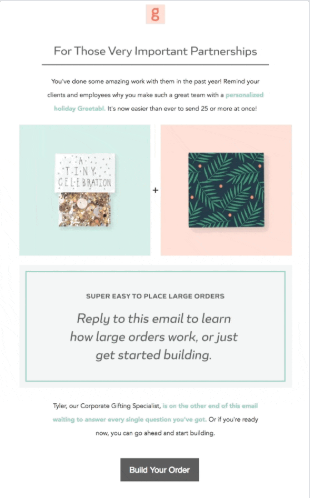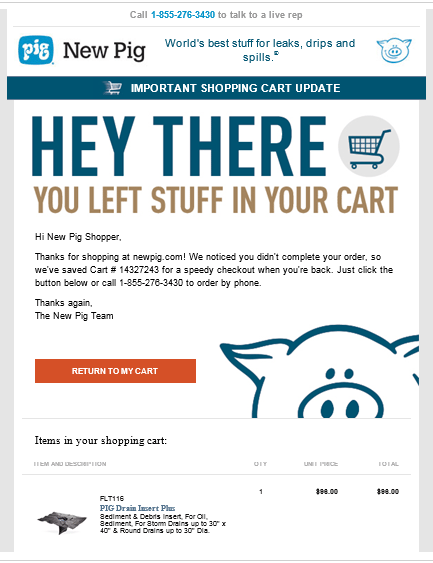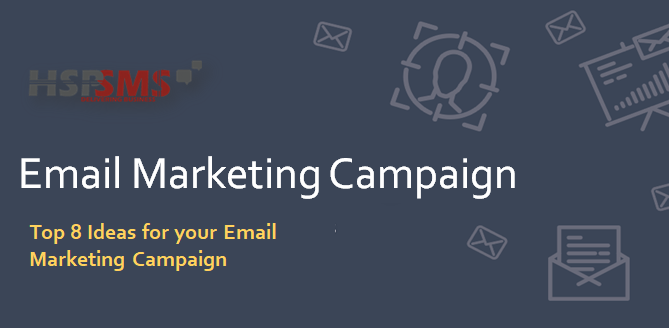Top 8 Ideas for Your Email Marketing Campaign
Introduction-
Email marketing is an important Inbound marketing channel for generating and nurturing b2c and b2b leads. One of the biggest reasons why marketers rely on email is that it is used widely and by people of all ages and professions. Research shows that in the US alone, 90.1% of people aged 15 to 65+ use email on a regular basis. It stands to reason therefore that you can reach much of your audience and build relationships with them if you make email marketing part of your lead generation campaigns.
Besides reaching wider audiences, email marketing delivers results cost-effectively. But whereas you may be aware of all these advantages and may indeed have been using email for lead generation, coming up with new and inspiring ideas can be difficult. Without new ideas, your campaigns will be dull and won’t inspire any clicks. To create email marketing campaigns that deliver results, you must be constantly innovative and evolve your approach to make your audience excited every time they see an email from you.
In this article, we will show you 8 ideas used and trusted by the best email marketing services and that will make your emails worth clicking on.
Top 8 ideas to revamp your email marketing campaign
1. Personalize your message
All lead generation services worth their salt will tell you that as the online space becomes more competitive, one-size-fits-all messages are quickly losing their effectiveness and are being replaced by personalized messages. Consumers too are asking for a personalized experience.
Personalized emails work for the following reasons:
• They appear tailor-made for the specific recipient, hence stand out among other promotional emails. More so, by personalizing, your audience will receive content that is right for them.
• They are more likely to be opened and read. According to campaign monitor, marketers who personalize their emails experience a 26% increase in open rates.
• Segmentation, a practice that enables personalization, results in better revenue and ROI. Research from DMA shows that participants experienced a 58% increase in revenue by segmenting and sending targeted emails.
But how, while marketing to thousands of people, can you make each one of your customers feel treated as an individual?
You can do so by making small changes to your emails such as:
• Instead of a generic greeting, address the recipient by name. If possible, the name should also be in the subject line.
• Customize content for your recipient. This is especially important when sending retargeting emails, in that your content should directly address what your prospect did when they were last online. Send them an offer for that product they looked at.
2. Increase engagement with video content
Video content has been shown to cultivate user interest and increase engagement. Even just including the word “video” in the subject can increase open rates. Experian, for instance, reported increased email open rates from 7% to 13% by mentioning “video” in the email subject. They also experienced conversion rates that were 21% higher where they included video in an email.
You can include video in your email using the following methods.
Embed video
Services like MailChimp and Vidyard make it possible to embed videos in an email. Embedding a video reduce the number of times your subscribers must click, giving them a more pleasant and efficient experience. This is especially the case for subscribers using mobile, where more clicks can quickly result in frustration, hence abandonment and fewer conversions.
Use a video thumbnail
A thumbnail is a video (or image) that typifies the content in your video. For your thumbnails to attract viewers, they should hint at the larger content in the video. Including a play button on a thumbnail is also a great way to attract viewers to click. Below is an example:

Image source: Vidyard
You can make your thumbnails more effective by customizing them to your audience.
Authenticity is key when you want to attract clicks. As such, invest some time in developing your own artwork instead of using stock graphics that may not relay your brand’s message effectively.
3. Include GIFs
In a bid to make your brand appear professional, you may put measures in place such as a set email template or specific wording and imagery. Unfortunately, this could result in marketing messages that are too formal, stiff and unnatural and near impossible to personalize. As you well know, personalization increases open rates, as evidenced by countless b2b marketing trends (including those mentioned above).
Granted, depending on your brand or audience, formal messaging formats and wording might be the only way to convey your message. But you can still stick to your messaging and use GIFs to give your emails more character. You can custom make your own GIFs with tools like Giphy, GIFmaker, imgflips among others.
One of the advantages of using GIFs is that they will help you to better demonstrate a point. For example, during their launch of XPS 12, DELL used a GIF in their marketing campaign to show people how the laptop easily converts into a tablet. Below were the campaign results:
• 6% higher email open rate
• 42% higher email click rate
• Increase in conversion by 103%
• 109% increase in revenue.
GIFs aren’t just useful in product launches. You can also include them in your welcome or thank you emails. A great example is this GIF by Greetabl, a company that specializes in gift cards.

Image Source reallygoodemails
So, next time you want to send a welcome or thankyou email to your clients, think about sending a GIF instead of plain text or image.
4. Improve your sales recovery strategy with cart abandonment emails
65% of shoppers abandon the checkout process before completing a purchase. This is known as cart abandonment and it is the very reason why you should put a lot of emphasis in improving your lead nurturing process.
You may not convince all cart abandoners to go back and complete checkout because not all leads ever intend to complete a transaction. However, some customers may have last minute doubts or just feel like they need to do some more research. Others may have a problem with their payment method or other technical difficulties. Such customers are highly likely to come back, but they need that extra nudge, which you can provide with cart abandonment emails.
Cart abandonment emails will keep you top of mind among customers that don’t convert. If you don’t engage such customers, they will forget you. While ecommerce emails have a 15% average open rate, data from SaleCycle shows that their abandonment emails attract more than double that average for multiple industries.
To increase the likelihood of conversion, reiterate the benefits of your offering in your email. You can also offer an incentive such as free shipping, free consultation/installation, free samples, or a buy-one-get one free offer.
Below is an example of a cart abandonment email below from New Pig:

Image Source: practical ecommerce
5. Overhaul transactional emails
For most companies, transactional emails are just that; they serve to complete a transaction between you and the customer. But your transactional emails can be a valuable inbound marketing tool. Every email you send to an existing customer or lead represents an opportunity to connect and possibly convert. So why not use transactional emails for that!
Note that transactional emails are not just the email you send after a customer makes a purchase. Other transactional emails include:
• Welcome and thank you emails
• Account status updates e.g invoices, loyalty points, discounts
• Monthly billing updates
• Email address confirmation during a double-opt in subscription process
• Notification and reminders
• Support emails
• Error alerts
• Reengagement emails (with inactive customers)
Although transactional emails are automated and may not serve any marketing purposes, they are still important for the following reasons:
• They add a personalized touch to your brand.
• They are based on behavioral data, hence have high relevance and value to the recipient
• Since they trigger following an action, they are timed to reach and grab their target’s attention
• They help to build a bond between you and your customers because they are responding to something the customer is interested in.
• They close communication gaps and thereby make your brand look reliable
6. Try out different image types
There are many claims online that some images are more effective than others in marketing campaigns. Such claims may trigger questions such as:
• Should I use product images or images of people in my emails?
• Should the people be models or real clients?
• Is it better to illustrate or should I use real photographs?
It is a fact that some images have been shown to perform better than others. Nielsen Norman group for instance found that big “feel-good photos” that are decorative tend to be ignored, while images with real people attract more interest.
But while this may be the case, the only way to know which image will work best for YOUR audience is to experiment with different types. More importantly, as with any other type of content, images should portray relevant information, for them to be considered valuable.
Try out different types and A/B test them to find the ones that result in higher open rates.
7. Showcase your testimonials
Testimonials are your online version of “word-of-mouth”. A report by Nielsen shows that 92% of people trust their family’s and friends’ recommendations more than other forms of advertising. A well-timed testimonial sent to an abandoning customer may help to redirect such a customer back to their cart to convert. Similarly, a testimonial can allay doubts for customers in the consideration phase. As well, you can use testimonials to upsell your other products or solutions.
Note that whereas testimonials validate your brand and the expertise that you offer, they can work against you if they are fluffy or vague. As such,
• Only market your brand with testimonials that are specific and tangibly show positive impact. Customers may not always know what this looks like, so when asking for testimonials, ask your customers specific questions.
• More so, ensure the testimonials are given by real people. It’s always likely that your prospects will try to verify your customers’ existence, so any name you give should link back to a real person working in a real company.
• Lastly, tailor your testimonials to speak to your targeted demographics.
In your future email campaigns, integrate testimonials in emails sent throughout the buyer cycle.
8. Create habits
Consistency is an important element of successful email marketing. Without consistency, customers and any leads you are nurturing will quickly forget you and move on to another brand. Not only does your audience want you to send them he information they expect, they also want you to send it to them when they expect it. This approach works wonders for webinars, live videos and podcasts, and you can effectively use it to get your audience to look forward to your emails once they’ve come to expect them at an exact time or day.
Consistency creates habits, which will in turn benefit you in the following ways:
Boost sales
Say for instance that you send out a coupon every two weeks. After a few coupons, customers will start looking forward to them and prepare to take advantage of future coupons by buying more.
Educate Customers
Content is all about educating customers and quite often, it may take more than a series of emails for customers to feel comfortable with their level of knowledge. The more regularly you send content, the shorter the length of time the education process takes and the more effective the process.
Build relationships
Consistency will also keep you more in touch with prospects and existing customers, making it easier to nurture relationships with them.
Fulfill expectations
People subscribe to your emails because they want to receive them. Whenever you send them an email, you fulfill this need and when you don’t send, you disappoint your subscribers.
Building brand image
Consistency makes your brand appear professional and capable. If you don’t send emails on the expected date and time, subscribers begin to wonder about your brand’s level of professionalism and may deem you incapable of handling their business.
Conclusion
There you have it! 8 ideas that when implemented, can revolutionize how you run email campaigns. We appreciate that while they sound easy on paper, these ideas can take time and energy to implement, hence we encourage you to use b2b lead generation services where possible.
That said, as you implement the ideas we have discussed above, you need to ask yourself whether your email list is well segmented. This is because even with the best campaign ideas, you are unlikely to succeed if your message is not received by its intended target.
Additionally (and this is a bonus idea), implement a referral programme among customers with whom you have built trust so that they can spread your brand message on your behalf. In every email you send your regular customers, include a referral link and where possible, offer an incentive for referrals.

